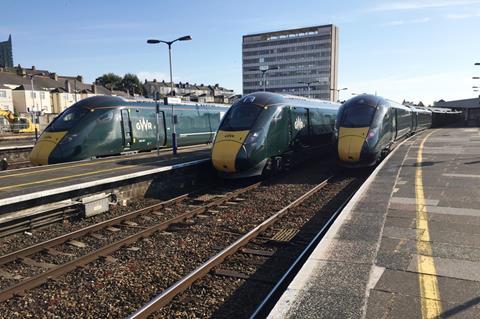
UK: Both fatigue and stress corrosion led to the cracks that resulted in Hitachi-built Class 80x trainsets and Class 385 EMUs being withdrawn from service earlier this year, according to an interim review released by the Office of Rail & Road.
Operators affected by the problems include Great Western Railway, LNER, Hull Trains, TransPennine Express and ScotRail.
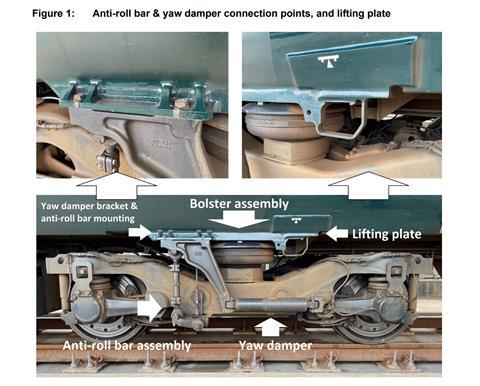
Noting that a root cause has not yet been established and the technical investigation continues, ORR concludes that the cracks found in the area of the bolster close to the yaw damper bracket and anti-roll bar fixing points were a result of fatigue. Such cracks occur when loads are above a threshold level but typically much lower than those required to cause an immediate structural failure. Fatigue cracks grow over time and reduce the strength of the component until the remaining material is not strong enough to take the loads being exerted.
However, ORR says the cracks found in the area where the lifting plates attach to the vehicle body were the result of stress corrosion cracking. This occurs when susceptible materials are exposed to a specific corrosive substance while subject to stress.
Following the discovery of the cracks, a 10% fleet check was carried out to assess the areas at risk. This identified SCC at the coupler support plates as well as the lifting plates, so the coupler support plates were added to the scope of the activities being undertaken to manage the cracking issues. SCC was also found on the brackets holding the obstacle deflectors, as already identified on the Class 395 trainsets. However several areas did not exhibit signs of SCC, notably the centre pin base plate; centre sill bracket; main transformer beam plate and yaw damper bracket/anti-roll bar stiffener.
Rapid reaction
Once the cracks had been identified, ORR reports that the rail industry worked collaboratively to withdraw the trains ‘swiftly’ and then establish a suitable process for assessing which were able to return to service. The interim review notes that since being put back into service, the trains have performed as specified, with no unsafe conditions or harm arising. This reflects the intensive examinations being undertaken on all trains at frequent intervals.
However, ORR notes ‘variable levels of communication’ between Hitachi and the train operators as the situation developed. One operator reported pressure from the manufacturer to get the trains back into service.
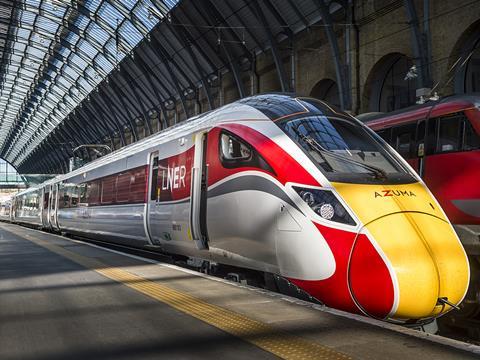
According to the report, two operators commented that Hitachi was ‘too slow in identifying and publishing data around crack progression rate. This information has relevance in determining if the repair/modification programme can keep ahead of issues requiring that further units are stopped from service.’
One operator considered that Hitachi Rail was heavily reliant on the design authority at the group’s Kasado plant ‘and intelligence which is based in Japan’. It suggested that ‘establishing intelligence and engineering support in the UK would expedite this and many other issues raised’.
The Department for Transport remains closely involved in the two largest contracts procured from Agility Trains through the Intercity Express Programme. According to ORR, one owning group commented that the IEP contract ‘did not have sufficient focus around safety responsibilities or draw on experience of running a Train Service Agreement; it doesn’t envisage a scenario of this scale of the cracks on vehicles or handle it well’.
Reflecting on the role of DfT, ORR notes that ‘some attendees at early pan-industry meetings and one owning group described pressure from DfT to put trains back into service, based on the view that if Hitachi said their trains were safe, then they were safe. However, this position was quickly resolved with clarity from ORR that the duty to ensure safe operation was with the operator and not Hitachi.’ The review reports a significant improvement once DfT understood where safety responsibility lay.
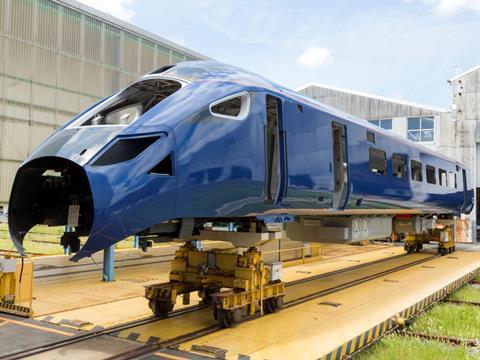
According to ORR, ‘one operator commented that in early meetings many opinions were offered without facts, which didn’t progress matters. They appreciated the direction and focus that DfT brought, setting meetings on the right track. Those involved agreed that DfT’s role expedited matters.’
Recovery plan
The regulator is continuing to work closely with all parties, including Hitachi Rail and the train operators, with the intention of publishing a final report in December 2021. This will establish the root cause of the cracking and review Hitachi’s plan for long term recovery and management of the fleet. It will also identify any areas for improvement for the industry.
Meanwhile, Hitachi is expected to provide ORR with a detailed response to the interim review by September 30. This should detail the ‘clear course of action’ that the manufacturer must establish for the recovery programme.
Hitachi is also expected to provide details of the design and manufacturing process, selection of materials used for the various trainsets and how the discovery of the cracking was managed. The wider rail sector will be examined over the way the problem was identified, the safety risk assessed and the vehicles returned to service.
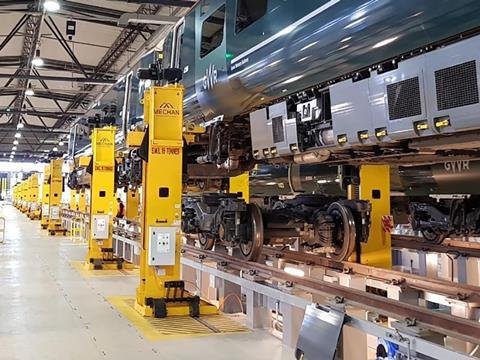
The regulator has raised concern over the industry’s ability to move from temporary to permanent repairs, reflecting a view that a regular repair programme may be required through the contracted 27½ year life of some fleets. ORR notes that ‘proposals for long-term management are still being developed by Hitachi, supported by Nichols. The objective is to ensure that there is no further need for additional containment activities to be undertaken as part of train maintenance.’
According to the interim review, it was found that ‘the heat input to the aluminium alloy components of the bodyshell had the potential to degrade the metallurgical properties and therefore any such repairs could only be performed a limited number of times at a given location’.
Regulator challenged
ORR confirms in the interim review that it had received criticism from operators about its role in the immediate aftermath of the crisis. ‘Two operators considered that the level of challenge made by ORR, at the pan-industry meetings, was excessive, unnecessary and beyond our remit, given that it is the operator which holds the duty to ensure their trains are safe.’
One operator reportedly believed that ORR’s initial stance ‘was to prohibit the fleet from operating’, but appreciated a ‘clarification’ from the regulator ‘that it was for the operators to assure themselves that they were armed with adequate information; principally around the level of checks and assumptions made by Hitachi, to inform their own risk assessments about operating vehicles in passenger service.’
ORR emphasised that its role as safety regulator ‘is to challenge the industry on safety decisions made, but we will look at what improvements we need to make to ensure that our role is understood and that challenge is appropriate and timely’. It noted that another operator had ‘welcomed ORR’s approach and intervention at the pan-industry meeting’, which it felt had ‘helped ensure all voices and approaches were heard’.
Minimising disruption
Responding to the interim report, a Hitachi Rail spokesperson said the regulator had highlighted ‘how the industry took timely and appropriate decisions to maintain the highest levels of safety. This collaborative approach also helped to get trains back into service so passenger disruption was kept to a minimum.
‘The interim report also demonstrates the significant amount of detailed, and independently verified, assessments Hitachi Rail has conducted to keep trains running safely. Our enhanced maintenance regime is helping to deliver stable passenger service, while we work tirelessly with all partners on long-term solutions.’



